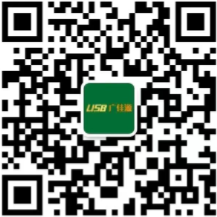 Mr. Chen:136-6225-2835
Mr. Chen:136-6225-2835
 Miss Chen:189-2385-0895
Miss Chen:189-2385-0895
Shenzhen Guangjiayuan Electronic Technology Co., Ltd
Mr. Chen: 136-6225-2835 (same WeChat account)
QQ: 979285705
Miss Chen: 189-2385-0895 (same WeChat account)
QQ: 2391552662
Chen Weiting :135-3824-4786 (same WeChat account)
Chen Weihao: 139-2459-4393 (same WeChat account)
Tel: 86-0755-33182327
Email: gjydz88@163.com
Website: www.usb-type.com
Address: Building 10, Hongxing Gebu Qixiang, Songgang Town, Bao'an District, Shenzhen, Guangdong Province
AjayBhatt, this name is definitely unfamiliar to you, but when it comes to his invention, you absolutely cannot do without it every day. This is - USB interface. He joined Intel's chip architecture team in 1990 and retired as a senior architect. At that time, computers relied entirely on serial and parallel ports to connect peripherals, such as mice, printers, and controllers, which were slow, complex to drive, and often unable to work simultaneously.
To address these issues, Bhatt proposed the "Universal Serial Bus" (USB), which replaces both serial and parallel ports with a single "universal" interface.
The USB1.0RRC candidate standard was first released in November 1995, completely solving the problem of inefficient old interfaces and affecting billions of people over the past 20 years.

The initial speed of USB was not fast, but it was simple and convenient, especially plug and play. With the advancement of technology, the speed of USB is also rapidly advancing, with the latest USB3.1 reaching 10Gbps, and a new style of Type-C that does not distinguish between front and back has also emerged.
The success of USB, in addition to the technology itself, is largely thanks to Intel, as it is completely open and free, and Intel does not charge any patent fees, so neither Intel nor Bhatt himself has made much money from it.

When purchasing a computer, it is common to mention the USB interface. What are the USB 3.0 and USB 2.0 interfaces? What is the difference between them? Many beginners don't quite understand this, they just feel that USB is used to plug in USB drives and some external devices. What is the difference between Usb2.0 and 3.0?
Actually, computers with Usb3.0 interfaces have been around for many years, but Usb3.0 devices, such as USB flash drives, have not yet become widely popular because Usb3.0 devices are more expensive. Fortunately, the Usb3.0 interface is Backward compatibility, which means that if your computer is a Usb3.0 interface computer, you can still use the Usb2.0 USB flash drive normally, but you can only transfer file data at the speed of Usb2.0;
1. Theoretical Speed USB is a transmission standard that defines the maximum speed at which data can be transmitted using a USB port.
USB2.0 theoretically supports a maximum transmission speed of 480M/s, while Usb3.0 theoretically supports a maximum ship speed of 5G/s, which means that Usb3.0 is nearly ten times faster than USB2.0 in transmission speed.
Of course, these are only theoretical values, which only define the maximum transfer rate through the USB port. However, different Flash also have their maximum speed limits, which will be the bottleneck of speed transfer.
How to distinguish between Usb3.0 port and USB2.0 port? This is very simple, Usb3.0 ports are usually blue in color.
As shown in the following figure, the USB2.0 port is on the left and the Usb3.0 port is on the right

2. The actual speed mentioned above is the theoretical speed of Usb3.0, but due to the speed bottleneck of flash devices, it is difficult to achieve this speed in practical use. So, in reality, how much faster is Usb3.0 devices than USB2.0 flash devices? This depends on the flash drive!
The recent testing of the foreign website Tom's Hardware's has been very professional and comprehensive. This test also includes some USB 2.0 devices, with write speeds ranging from 7.9MB/s to 9.5MB/s. The write speeds of different Usb3.0 devices range from 11.4MB/s to 286.2MB/s.
It can be seen that there is a significant difference in speed between Usb3.0 devices. The worst-speed Usb3.0 device is only slightly faster than the USB2.0 device, and the fastest Usb3.0 device even has a speed of up to 286Mb/s
Undoubtedly, the slowest Usb3.0 device is the cheapest, and the faster the device, the higher the price. The fastest driving device uses "four channel technology" instead of a single channel, and its price is also significantly more expensive.
Contact person:
Mr. Chen 136-6225-2835 (same WeChat account)
Miss Chen 189-2385-0895 (same WeChat account)
Chen Weiting 135-3824-4786 (same WeChat account)
Chen Weihao 139-2459-4393 (same WeChat account)
Address:
Building 10, Hongxing Gebu Qixiang, Songgang Town, Bao'an District, Shenzhen, Guangdong Province
 |
 |
| Technology 1 | Technology 2 |